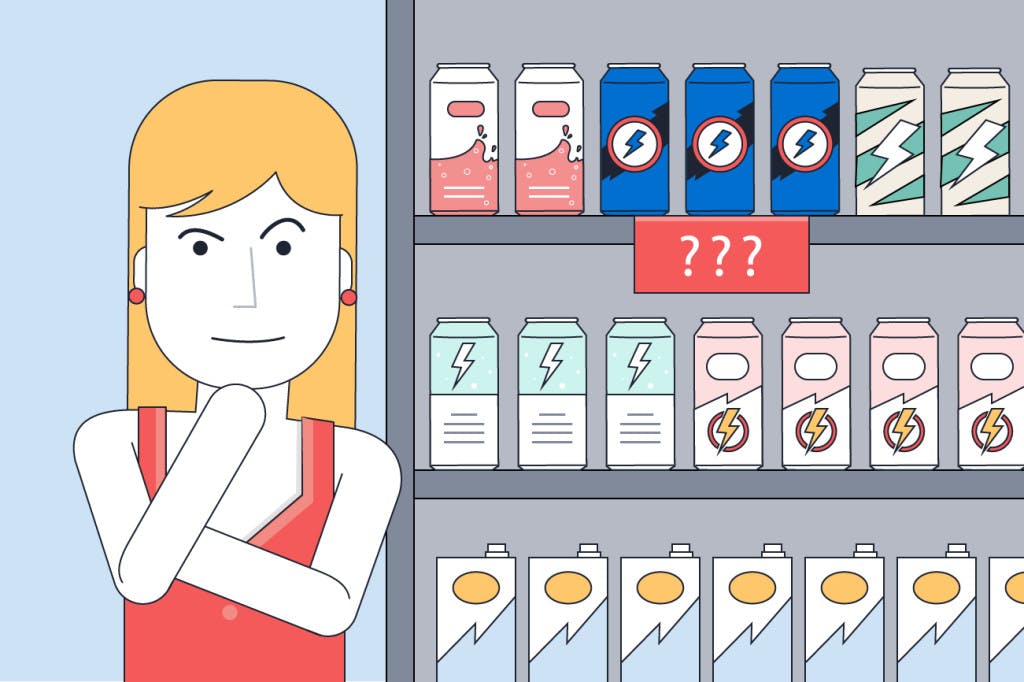Last time we met, dear readers, I confessed my past sins of shelling out stupid amounts of money for frozen pizza. But more important, I shared with you some insight from industry experts on things you need to consider when pricing your new product. You have to consider all of the attributes that got your product to market in the first place, whether that’s size, or flavor, or eco-friendly footprint. Whatever it is, use it to your pricing advantage.
But let’s not forget that your product, while innovative and a great addition to the store shelf, can’t be viewed in a vacuum. There are other products sharing the shelf, and while consumers may be paying full price today, tomorrow they may find their new favorite item on sale. With a double coupon!
“If the product is newly launched, there is still time to make course corrections.”So what’s an innovator to do if your product is already out there, and the price is…wrong? It’s too high, or too low. Or there’s too much of a discrepancy between your product’s price and another, similar product’s price. Or the product just isn’t moving the way you want it too, and feedback from consumers all circles back to the cost.
First, know that your product is not doomed. No product is doomed, if you’re proactive, have done your research, and are willing to make changes when you realize you didn’t do something in the best way that you could. (ie, When you realize you were wrong.) (It’s okay. We’re all wrong sometimes. It’s the nature of life. Even I’m wrong sometimes.) (Don’t tell my husband I said that last part.)
Second, know that you have options. Remember Neil Stern from the last post? He says you still have a chance to turn things around.
“If the product is newly launched, there is time to make course corrections,” Stern says. “The customer hasn’t yet locked in on a price and a retailer is still in the evaluation phase. So many new products fail at retail, so you want to start out strong, even if that means taking a lower initial margin than anticipated. Using creative promotions–like sampling, social media contests, is a good way to course correct without sacrificing margin.”
LEK’s Rob Wilson, the other expert from our last post, also notes that a resolution to a pricing problem depends on the nature of the problem, the channel, and the product category.
“If we assume the product is a consumable in the grocery channel that is priced too high to generate desired velocities without heavy promotion or steep discounts, consider taking out ounces per unit, lowering the unit price, and promoting at lower discount rates to maintain or increase the average price per ounce,” he advises.
These are just two of myriad ways you can resolve price issues. What’s important to keep in mind when reviewing a new product’s pricing structure is that pricing? Is such a B.
Balance.
Pricing is a balance.
(Wait, what did you think I meant?)
It’s a balance between what your customers need and want your product to be, and what your product is. In November 2015, Chicago-based IRI published “Merchandising for Growth: Connecting the Dots for Maximum Activation,” and the report had this to say about product pricing:
“With a clearly defined price pack architecture in place, marketers can turn their focus to striking a balance between everyday pricing and trade pricing. That balance will vary across—even within—categories. After all, marketers must consider the fact that consumers are often willing to switch (including to private label) to save money.”
No matter how you price your product, you will experience newcomers and naysayers. How you handle the feedback you receive, and how your sales ebb and flow can help you determine what the best pricing structure for your product, and your product only.
Have you experienced pricing issues? How have you resolved them?


